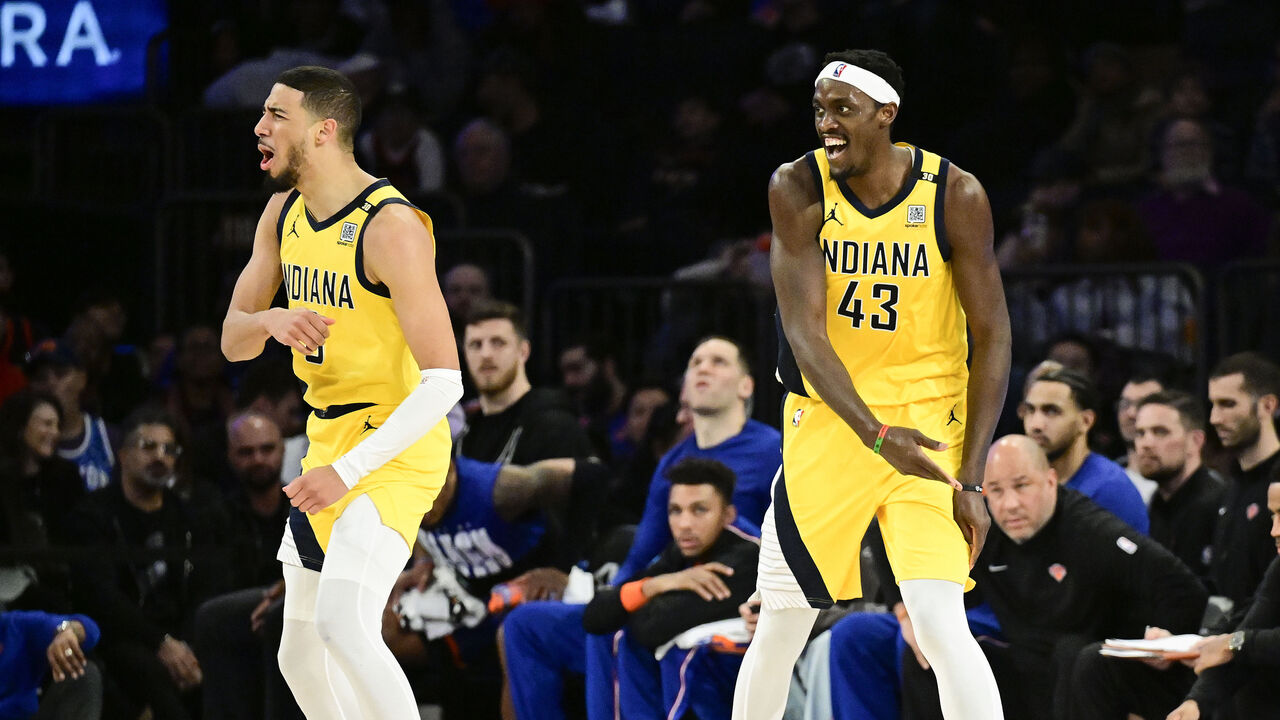New faces, new places: How are midseason acquisitions working out?
Though this year’s NBA trade deadline was a bit of a dud, trade season on the whole still brought plenty of high-profile deals. Things just got rolling a bit early.
With a month’s worth of post-deadline games in the books, and more than that since big names started to move, we’re checking in on how some of the most consequential additions have worked out so far.
Pascal Siakam | Pacers
Though his individual impact has been as advertised, we haven’t seen the full scope of Siakam’s seemingly perfect fit in Indiana. That’s largely because Tyrese Haliburton, the superstar he was brought in to complement, has been either sidelined or limited for most of the six weeks the two have spent as teammates. Haliburton missed five of the first six games Siakam played for the Pacers due to a hamstring injury, returned on a strict minutes limit, and has been markedly less effective since coming back.
Haliburton’s recently shown signs of rounding back into All-NBA form, but he and Siakam clearly need more time to figure out how to amplify one another. The Pacers have been outscored by two total points in the pair’s 485 shared minutes, with an offensive rating (114.9) that would rank in the league’s bottom half. They rarely interact in half-court actions, and their timing is frequently off when they do. It’s like a small-scale version of another 1-4 star pairing that took a while to get off the ground in Milwaukee.

In Toronto, Siakam got used to working in isolation and running pick-and-roll as a ball-handler rather than as a screener. The latter is something he’s never shown much aptitude or enthusiasm for, which is why I had a hunch he’d be more effective working in concert with ghost-screener extraordinaire Buddy Hield than with Haliburton (who can serve that function in spots, but is most comfortable with the ball in his hands). Unfortunately, shortly after they linked up, Hield was shipped to Philadelphia.
Still, even with Hield gone and Haliburton struggling, Siakam has adjusted well to his new, more spacious environment. He’s getting about eight fewer touches per game, but he’s making the most of those touches, shooting 59% from 2-point range and 38% from deep while committing turnovers at by far the lowest rate of his career.
He’s meshed perfectly with Indiana’s fast-paced, grab-and-go ethos, and he’s given their offense a new in-between wrinkle; he’s attempted 47 more non-rim twos than anyone on the team since the deal and hit 52% of them. With more room to operate and fewer double-teams coming his way, he’s scored an extraordinary 1.31 points per possession on post-ups as a Pacer, third among 59 players with at least 50 such possessions, per NBA Advanced Stats.
At the other end, he hasn’t exactly repaired the Pacers’ ramshackle defense (nor their wretched rebounding), but they do rank a semi-respectable 19th in defensive efficiency since the trade, compared to 27th before. Siakam is part wing, part big man, but isn’t elite in either role at this stage of his career. He’s been pretty disappointing as a backline helper in Indiana. Regardless, his length, agility, and smarts have given the team a much-needed option to both guard big opposing wings and switch onto centers.
The trade may not beget as much short-term success as Indiana hoped, but if Siakam re-signs in the offseason, this has the makings of a fruitful long-term partnership. – Joe Wolfond
OG Anunoby, Bojan Bogdanovic | Knicks

Given how shorthanded the injury-ravaged Knicks have been, it would be foolish to glean too much from their play over the last few weeks. The same can be said for Bogdanovic’s performance, as he hasn’t logged enough time with New York’s best players. But reinforcements are coming, and it’s not hard to see how the veteran scorer will help balance things out.
Though his efficiency hasn’t quite been up to his usual standards, Bogdanovic’s ability to create for himself has been a boon for the depleted Knicks, especially as part of a reserve core currently facing a dearth of rotation-caliber talent. His team-high 22 points in a win over the 76ers and his 20 points off the bench to help spur an upset win in Cleveland could loom large as New York jockeys for playoff positioning.
Bogdanovic should look even better when Josh Hart and Precious Achiuwa return to the team’s second unit, while his shot-creation and marksmanship will help create space for All-Stars Jalen Brunson and Julius Randle to operate in. The full-strength Knicks will also be able to better minimize the negative effect of Bogdanovic’s waning defense.
As for Anunoby, New York looked like a genuine contender after the 3-and-D specialist arrived from Toronto, and that was before the Knicks added Bogdanovic and Burks at the deadline.
Whether it’s locking down the opposing team’s best players, making it rain from the corners, or scoring at the rim – after bullying a mismatch or a perfectly timed cut – Anunoby has been everything the Knicks hoped he’d be. An elbow injury kept him out for 18 games, but the Knicks are 13-2 with OG in the lineup. His game ties everything together. – Joseph Casciaro
Immanuel Quickley, RJ Barrett | Raptors

As a team that acted as both seller and buyer during this year’s trade season, the ever-confounding Raptors completely remade themselves.
With apologies to Kelly Olynyk (a useful vet who the Raptors already extended), Ochai Agbaji (a role-playing project), and Bruce Brown (who doesn’t seem long for Toronto despite curiously staying put at the deadline), it’s the two former Knicks acquired in the Anunoby deal who’ll ultimately determine the success or failure of this retool. And while it’s been a dismal season in Raptorland, the encouraging early returns on both of them – at least offensively – represent a silver lining.
Let’s start with the biggest surprise. Though Barrett initially looked like a throw-in to help facilitate the Quickley addition, he’s been the more productive of the two players since the trade. His game has always been full of promise, but it’s been bogged down by shaky shooting, poor finishing, and bouts of indecision. Much of that excess has been stripped away in Toronto’s more flow-oriented offense, which has delivered Barrett the ball on the move and helped streamline his decision-making. He’s been deadly attacking off the catch, and has done some of the best distributing of his career.
Barrett’s effective field-goal percentage with the Knicks was 47.8% this season, and maxed out at 49.9% in 2020-21. In 27 games with the Raptors, it’s up to 60.6%. Shooting 42% from long range certainly helps, and that’s the aspect of his sudden improvement that feels least sustainable considering he’s a sub-35% career 3-point shooter. But what’s really fueling his rise is his newfound success at the rim.
As a Knick, he was never better than a 24th-percentile finisher. As a Raptor, he ranks in the 85th percentile, with a 71% success rate on shots inside four feet, per Cleaning the Glass. He went from shooting 38.6% on 10.2 drives per game to shooting 53.6% on 12 per game, per NBA Advanced Stats. He’s given Toronto the kind of dribble-drive rim presence it’s sorely lacked ever since trading Norm Powell three years ago.
Quickley, by comparison, has struggled to get to the rim and finish there. That, on top of an inexplicable drop-off in the effectiveness of his floater, is why he’s shot 43% from 2-point range with the Raptors. But while he’s taken some lumps while adjusting to life as a lead ball-handler, he’s also shown meaningful strides.
From the beginning, it was clear how much his shooting ability off the dribble and off movement was going to change the shape of Toronto’s offense. He’s hit 42% on over seven 3-point attempts per game, which is the biggest reason the Raptors have jumped from 26th to 13th in 3-point percentage since the trade. (Throw in Barrett’s 52% rim frequency, and the team now has the eighth-most efficient shot profile in the league, per Cleaning the Glass.)
More recently, we’ve seen Quickley adapt to the uptick in on-ball reps by leveling up as a playmaker. Unfortunately, he and Scottie Barnes weren’t able to develop any kind of chemistry in their two months together before Barnes suffered a potentially season-ending hand injury. But Quickley did develop a very strong pick-and-roll partnership with Jakob Poeltl before Poeltl also hit the shelf with a hand injury.
Quickley’s pocket-passing has markedly improved, and a recent 18-assist game demonstrated how much he’s learned to weaponize his gravity in order to create for others. He’s also made a point of keeping his dribble alive longer and getting all the way to the basket more, upping his rim volume from 13% pre-All-Star to 21% since. There’s still a long way to go, but he’s begun to look like the well-rounded lead guard of the future the Raptors envisioned when they acquired him. – Wolfond
Terry Rozier | Heat
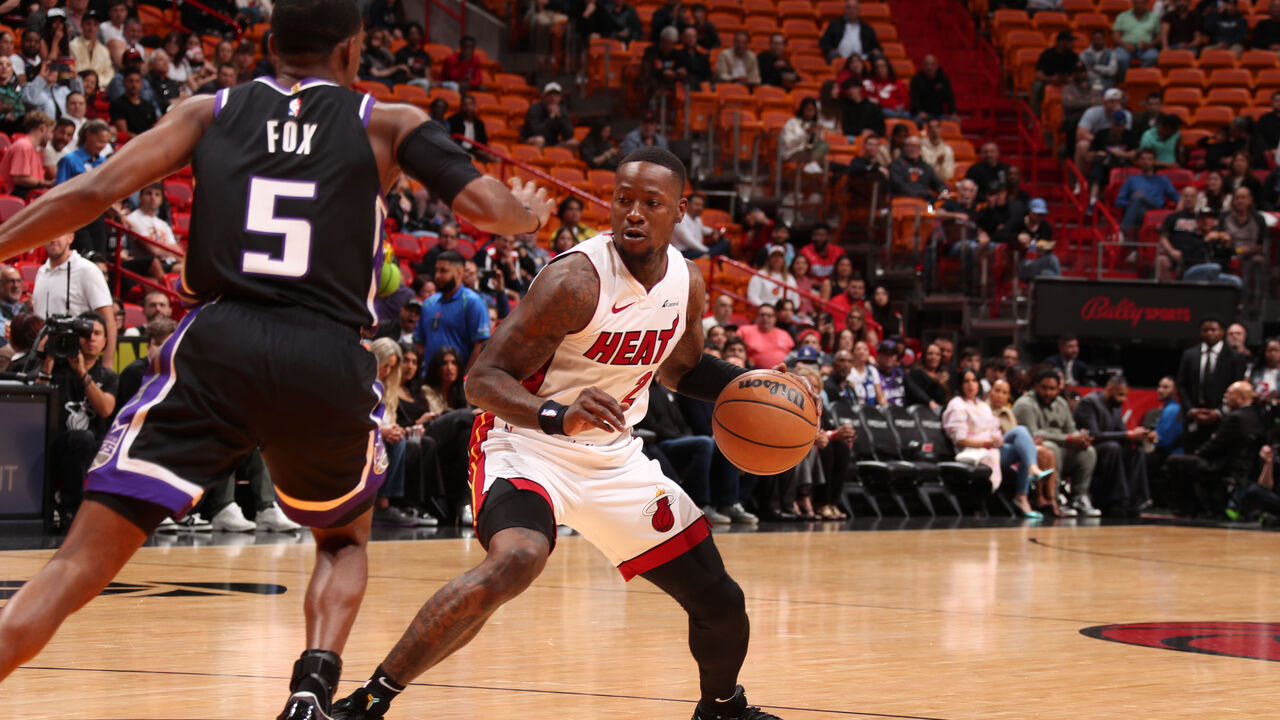
Rozier’s probably been the most disappointing player on this list, but the last couple weeks have provided some reason for optimism. At least on an individual level.
Though his underrated playmaking (and caretaking) shone immediately in Miami, Rozier was mostly awful through his first 10 Heat games. His efficiency tanked, he seemed unsure of when or how to attack within Erik Spoelstra’s movement-heavy system, and his defense left a lot to be desired. But after returning from a sprained knee that sidelined him for more than two weeks, Rozier’s started to resemble the player Miami was thrilled to acquire in January.
Over his last seven games, Rozier’s averaged 18 points, six assists, 4.4 rebounds, and a steal while shooting 52.6% inside the arc, 38.9% from deep, and 93.3% from the free-throw line. During that time, Scary Terry is second on the team in scoring and assists, and third in minutes behind Jimmy Butler and Bam Adebayo. Still, if you’ve watched the Heat lately, you know something still doesn’t look quite right, as Miami’s dropped three straight and is coming off a loss to the league-worst Wizards.
An improved offense has coincided with a defensive slide, which perhaps should’ve been expected with Rozier and Duncan Robinson making up the Heat’s starting backcourt. Though the numbers suggest Rozier has juiced the team’s scoring, the offense doesn’t seem to have its usual flow. In addition, Rozier is actually creating his own field goals more often with a more talented Heat team around him (63.2% of the time) than he did in Charlotte (57.1% of the time), according to Basketball Reference.
When Tyler Herro returns from a foot injury, it would probably be best to leave Robinson in the starting five and move Rozier to the bench. Herro can replicate Rozier’s off-the-dribble creation, and Robinson is a less intrusive scorer. Rozier can still help the Heat in their quest to repeat as Eastern Conference champions, but perhaps he can’t fill the role initially envisioned for him. – Casciaro
P.J. Washington, Daniel Gafford | Mavericks
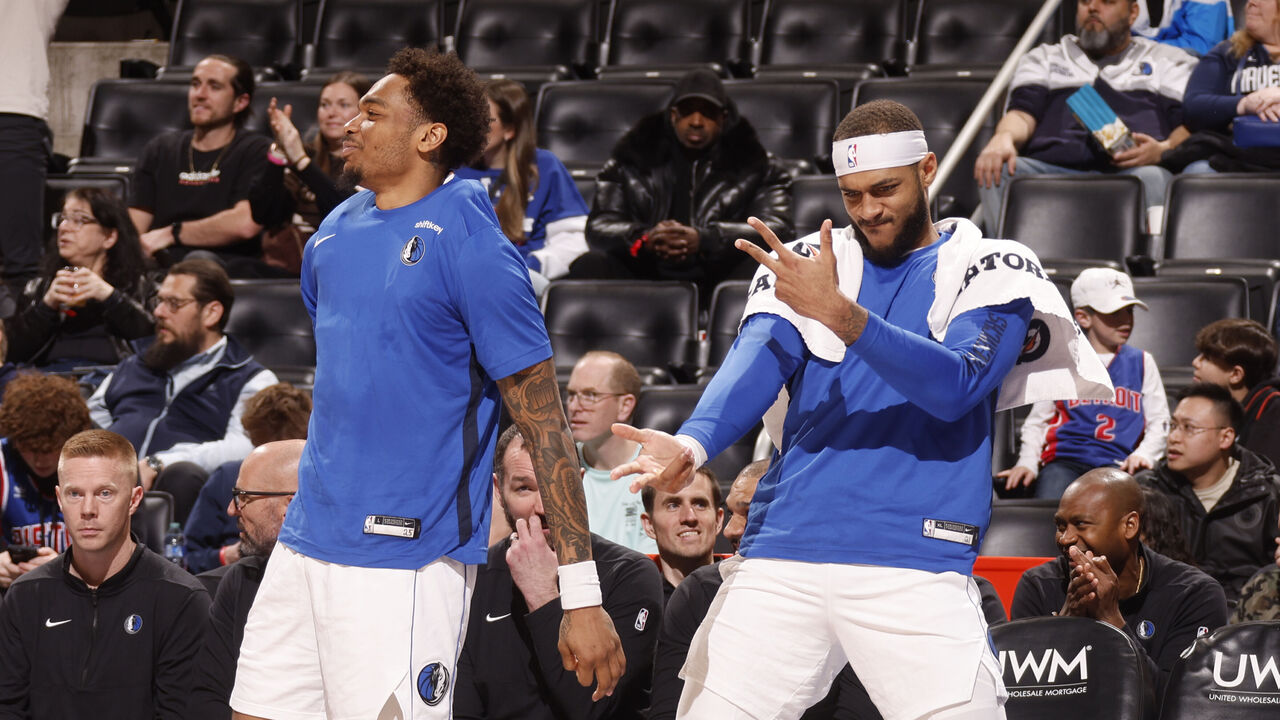
The Mavs probably aren’t good enough to justify all the draft capital they spent to put this supporting cast around Luka Doncic, which included shelling out a top-two-protected 2027 first and an unprotected 2028 swap to acquire Washington and Gafford at the deadline. But they’re 8-5 with the league’s second-best offense and sixth-best net rating since those two guys debuted, so the deals are paying off in the present.
Washington’s been solid in his role, and the particular way he’s impacting winning has been a welcome surprise. Though he was a spotty defender throughout his tenure in Charlotte, Dallas has thrown him into the deep end by routinely giving him the toughest wing assignments, and he’s acquitted himself well. He’s moving his feet better, he’s making more second-effort plays, and he’s more engaged as a helper. That’s helped mask his oft-frustrating offense – namely the fact he’s getting more wide-open threes than any other Maverick and hitting only 31.7% of them. For reference: Grant Williams, the guy everyone apparently hated and couldn’t wait to run out of town, hit 40.7% of his wide-open triples before being shipped to Charlotte.
But Washington has more utility inside the arc, where he can do stuff like attack closeouts, post mismatches, and screen-and-dive. That stuff shines when he shares a frontcourt with Maxi Kleber rather than Gafford or Dereck Lively II. The move to get Gafford seemed to signal the Mavs wanted to play 48 minutes with a rim-running center on the floor, but they’ve continued to lean on Kleber at the five, and they basically always have Washington playing the four beside him. Those lineups have been dominant at both ends, outscoring opponents by 18 points per 100 possessions, per Cleaning the Glass.
That does make you wonder why the Mavs felt compelled to send out that valuable pick swap in order to get Gafford. He’s a nice lob threat to pair with Doncic and he inhales offensive rebounds, but Jason Kidd never trusts him in big spots, preferring to close with Lively (who has a more versatile offensive skill set) or Kleber (a significantly more versatile defender). Gafford hasn’t been bad, but given that he’s only providing 18 minutes a night of decent backup center play, you wonder if Dallas’ front office isn’t feeling a bit of buyer’s remorse on that one. – Wolfond
Buddy Hield, Kyle Lowry | 76ers
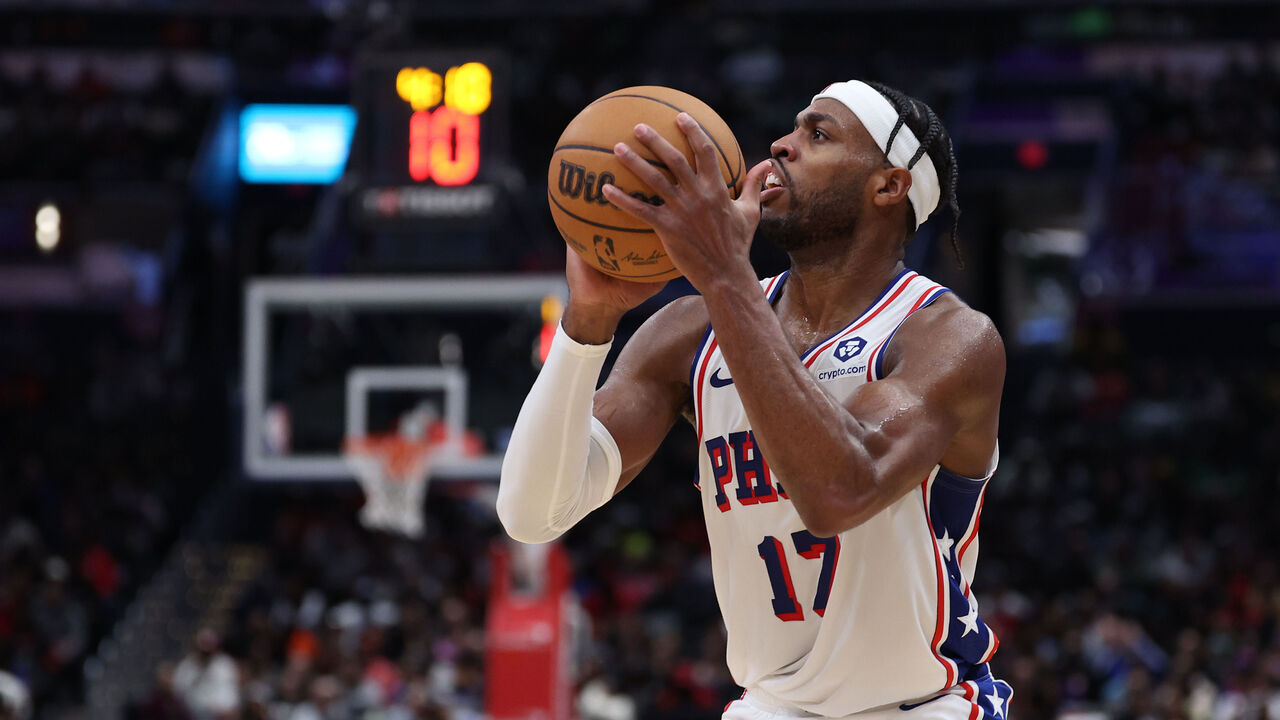
Like others on this list, Hield’s had to navigate challenges that come with joining a depleted team in the middle of the season. With Joel Embiid sidelined and fellow All-Star Tyrese Maxey missing time, the Sixers haven’t been whole since acquiring Hield on deadline day. That’s left the veteran shooter to fill a different role than the full-strength Sixers would require of him, and he’s done so admirably.
The Sixers are 6-9 since the deadline, Hield’s had some rough moments inside the arc (especially from floater range), and his defensive issues are well-documented, but he’s taken on more playmaking responsibilities and mostly aced that test. Hield’s assist rate as a Sixer (22.8%) marks an 81% increase over his pre-deadline assist rate as a Pacer, and a 70.1% increase compared to his career average. He’s also done that without increasing his turnover rate and while remaining a 40% shooter from deep on high volume (7.9 attempts per game).
Perhaps most importantly, the durable Hield hasn’t missed a game since being acquired, soaking up necessary minutes for a team that’s looking for rotation consistency. Hield’s missed only six games over his eight-year career.
Speaking of guys being asked to fill a larger role than ideally suited for, how about soon-to-be 38-year-old Kyle Lowry? The North Philly native ranks fourth on the Sixers in minutes per game – and looks surprisingly spry – since joining his hometown squad, posting shooting splits of 48-37-92 during that time.
The catch is that Lowry rarely shoots the ball these days. Among 222 players who’ve logged at least 1,000 minutes this season, his 13% usage rate ranks 207th – almost unfathomable for a guard. Still, Lowry takes care of the ball (3.8-to-1 assist-to-turnover ratio), is efficient when he does let it fly, and generally makes good decisions on both ends of the court. In other words, he’s done his job. Now he needs the Sixers to get healthy so that what he offers at this stage of his career is enough for his new team. – Casciaro
Royce O’Neale | Suns
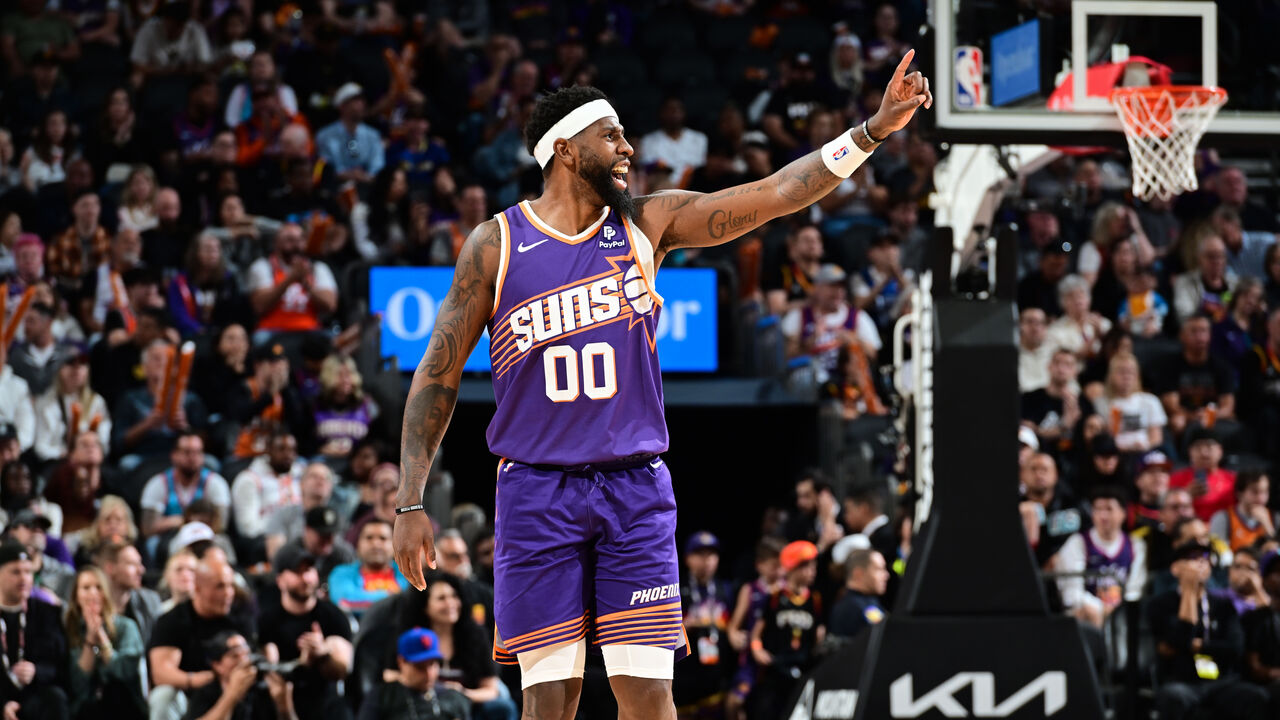
Maybe the most underrated low-cost deadline addition, O’Neale’s slotted in perfectly on a team desperate for more functional depth and size on the wing.
Defense is O’Neale’s calling card, but his ability to hit 37% of his threes while making slick extra passes (he has 47 assists to 10 turnovers as a Sun) sets him apart from other options like Josh Okogie, Nassir Little, and Keita Bates-Diop. He’s back to coming off the bench now that Bradley Beal and Devin Booker are healthy, but O’Neale functioned well as a fill-in starter and should continue to find success playing alongside the Suns’ three stars.
Though he’s listed at 6-foot-4, O’Neale’s ability to slide up the positional spectrum, in some cases all the way to center, has changed the look and feel of Phoenix’s defense, which has surrendered a miniscule 104.9 points per 100 with him on the floor. On top of giving the Suns another weapon to throw at opposing wings, his presence allows them to cross-match Jusuf Nurkic onto non-shooters while still keeping Kevin Durant in help position and sparing him the punishment of jostling with an opposing five.
O’Neale’s impact has perhaps been most evident when the Suns go small with Nurkic on the bench. Lineups featuring Durant at center got torched by 14.2 points per 100 possessions before the trade, per Cleaning the Glass. Those lineups with O’Neale in them have outscored opponents by 9.4 points per 100.
It’s hard to overstate the value of adding a smart, experienced, versatile 3-and-D wing to the rotation, especially as we look ahead to the playoffs. – Wolfond
Patrick Beverley | Bucks

The Bucks have mostly got what any team can reasonably expect from Beverley. He’s defended hard, irritated opponents, and played within his limited role on the offensive end.
Beverley and Milwaukee’s reserve-filled lineups have taken their lumps, but his value to the Bucks should be more pronounced when the playoffs begin. Starting shooting guard Malik Beasley’s shot the leather off the ball this season (not lately), but his size and defensive shortcomings could nullify his postseason utility. In Beverley, the Bucks now have a backcourt partner to pair with Damian Lillard who can help protect the All-Star rather than compound his defensive deficiencies.
In 101 minutes Lillard and Beverley have shared the court since the latter debuted Feb. 9, the Bucks have posted a 106.6 defensive rating. No team’s defended better than that since the trade deadline. In Lillard’s minutes this season without Beverley on the court, Milwaukee’s allowed 114.1 points per 100 possessions, according to PBP Stats.
The defensive value Beverley provides can still be better utilized during the regular season, too. For example, Beverley should’ve been in the game for defensive purposes on the Lakers’ game-winning possession March 8, when Lillard was predictably targeted by L.A. guard D’Angelo Russell.
Head coach Doc Rivers could probably stand to get Beverley in there with the team’s best players more often and find time for him in late-game situations on the defensive end, but Beverley’s teammates already feel his presence.
“He’s one of those guys that you say, ‘He’s an A-hole.’ But when he plays on your team, you’re like, ‘That’s my A-hole.’ You know?” Giannis Antetokounmpo said after a recent road win over the Clippers.
“And I love him. We love playing with him. He’s a leader. He knows how to play the game. He’s a winner.” – Casciaro

